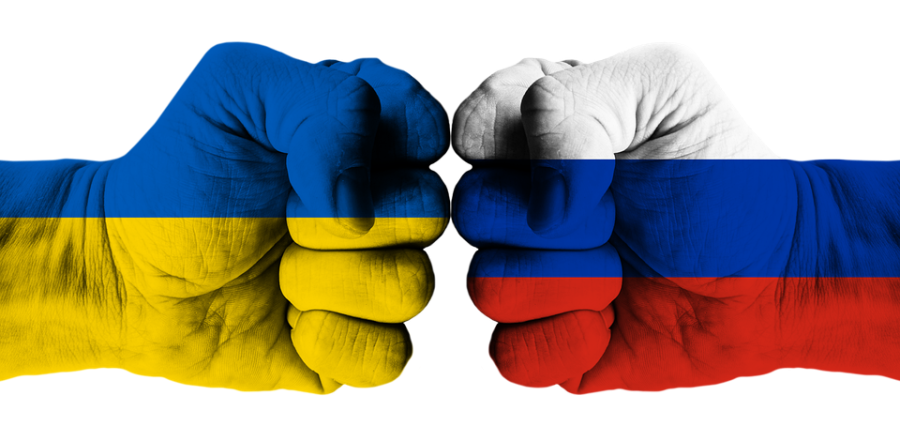The Russia-Ukraine Conflict and How It Spirals Out of Control
March 11, 2022
With the recent entry of Russian forces into Ukrainian territory, tensions have been at an all-time high. Members of NATO (North Atlantic Treaty Organization) have spoken out against the Russian government, and the two opposing sides have readied themselves for the possibility of conflict in the near future. With the recent violence taking place, many wonder if a potential world war is in the conversation.
The buildup of Russian forces outside of Ukraine has been occurring for several years now. The first Ukrainian territory annexed by Russia was Crimea, about eight years ago. Over the past months, the threat of invasion has become more and more imminent, as forces surrounded Ukraine’s borders from both Russia and Belarus. As of February 24th, that threat turned into a reality. Russian troops entered Ukraine, swiftly moving through its territory. Bombs were fired in Ukraine’s capital city of Kyiv, as well as in other major cities, causing an alarming number of casualties. Russian President Vladimir Putin has proven himself to be the aggressor in the conflict, stating that any country that tries to oppose Russian forces would face penalties “so severe that no foreign nations have ever experienced it before.”
Meanwhile, the other side of the conflict has taken the diplomatic approach. Members of NATO criticized the Russian government while sending aid to Ukraine. Recently, the United States and the United Kingdom both announced major economic sanctions designed to severely hurt the Russian economy. President Joe Biden has also decided to move US troops to the allied nations of Germany and Poland.
A current issue of the situation is that Ukraine is not a member of NATO. The fundamental principle of the NATO alliance is that if any member were to fall victim to invasion, the other members would go and help them. Because Ukraine is not a member, help in the fight against Russia has mostly been in the form of supply shipments rather than military power to fend the attackers off. Ironically, the main reason Ukraine didn’t join NATO was that Russia wanted to limit NATO’s eastern spread.
So how would a possible world war evolve from the current situation? I see two major possibilities that would lead towards a greater global conflict. While nothing is guaranteed, it’s best that we stay updated and ready for any changes in the future.
Scenario One: Russian Force Overload
Although the Russian invasion of Ukraine has been aggressive, the true motives of Putin have not been revealed. What he hopes to accomplish is unknown, leading to many different directions that Russia can follow. In this scenario, Russia would continue to search for territory beyond Ukraine by invading other countries, causing necessary intervention from the rest of the world. This could involve any of the Baltic countries (Lithuania, Latvia, Estonia), the South Caucasus Region (Georgia, Armenia, Azerbaijan), or other territories that could fall victim to Putin’s hungry search for power. Another possibility for this scenario would be the diplomatic annexation of countries into Russia. Some countries like Kazakhstan, Kyrgyzstan, and Belarus (many former parts of the U.S.S.R.) have shown full support towards Russia’s invasion. Joining Russia as a unified state is a far stretch, but the last few weeks have revealed that anything is possible.
Scenario Two: Inspired Conflict
This scenario revolves around the idea of conflict sprouting in other areas of the world as a result of the invasion of Ukraine. As of late, many regions around the world have been in conflict, many of which were dangerously close to combat. This could include international conflicts between nations such as Taiwan and China, India and Pakistan, and more. Further war could also stem from domestic-based conflicts such as the conflict between Israel and Palestine, or even the wave of civil war/civil unrest plaguing Africa (Nigeria, Somalia, D.R. Congo, Ethiopia, etc.) and the Middle East (Yemen, Syria, Iraq, etc.). If smaller conflicts evolve into larger conflicts as we saw in Ukraine, there is potential for greater global violence.
While the idea of a larger-scale war in the world is theoretical, it is not impossible, and we must all stay safe and aware of what is happening around the world.

















































































































































